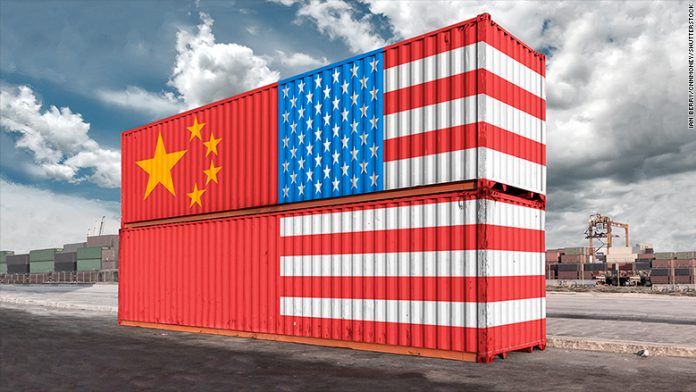
BEIJING: China’s global trade balance swung to a rare deficit in March as exports shrank but its surplus with the United States, the center of a worsening dispute with Washington, stood at $15.4 billion.
Exports contracted 2.7 percent from a year earlier to $174.1 billion, down from the 24.4 percent growth for the first two months of 2018, customs data showed Friday. Imports rose 14.4 percent to $179.1 billion, though that was down from 21.7 percent growth in January and February.
The trade surplus with the United States contracted 13 percent from a year earlier, while China’s global trade balance swung to a $5 billion deficit.
President Donald Trump has approved a possible tariff hike on $50 billion of Chinese goods in response to complaints Beijing steals or pressures foreign companies to hand over technology. Trump is demanding Beijing take steps to narrow its trade deficit with the U.S., which Washington says stood at a record $375.2 billion last year.
China runs multibillion-dollar monthly surpluses with Europe and the U.S., which helps to offset deficits with Japan, South Korea and developing countries that supply industrial components and raw materials. The global trade balance often slips into deficit for one month early each year as factories restock following the Lunar New Year holiday.
Chinese President Xi Jinping announced market-opening measures including a cut in import taxes on autos and an easing of controls on foreign ownership in China’s auto industry.
The Commerce Ministry denied Thursday that had anything to do with the dispute with Washington and said negotiations were impossible while Trump was threatening tariff increases on a possible $100 billion list of additional goods.
Forecasters have been expecting Chinese economic growth to weaken since late last year after regulators tightened controls to cool a boom in bank lending and real estate sales they worry is driving a dangerous rise in debt.
Meanwhile, China’s trade surplus with the 28-nation European Union, its biggest trading partner, shrank by half from a year ago to $3.6 billion.




















